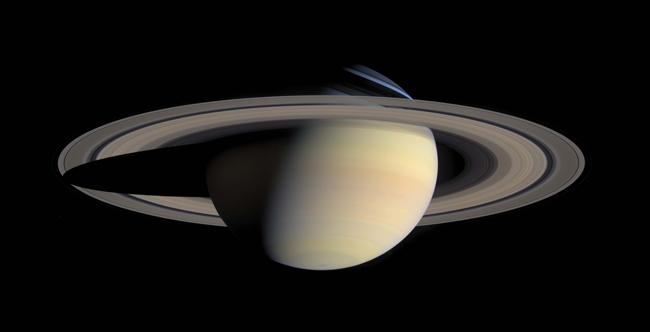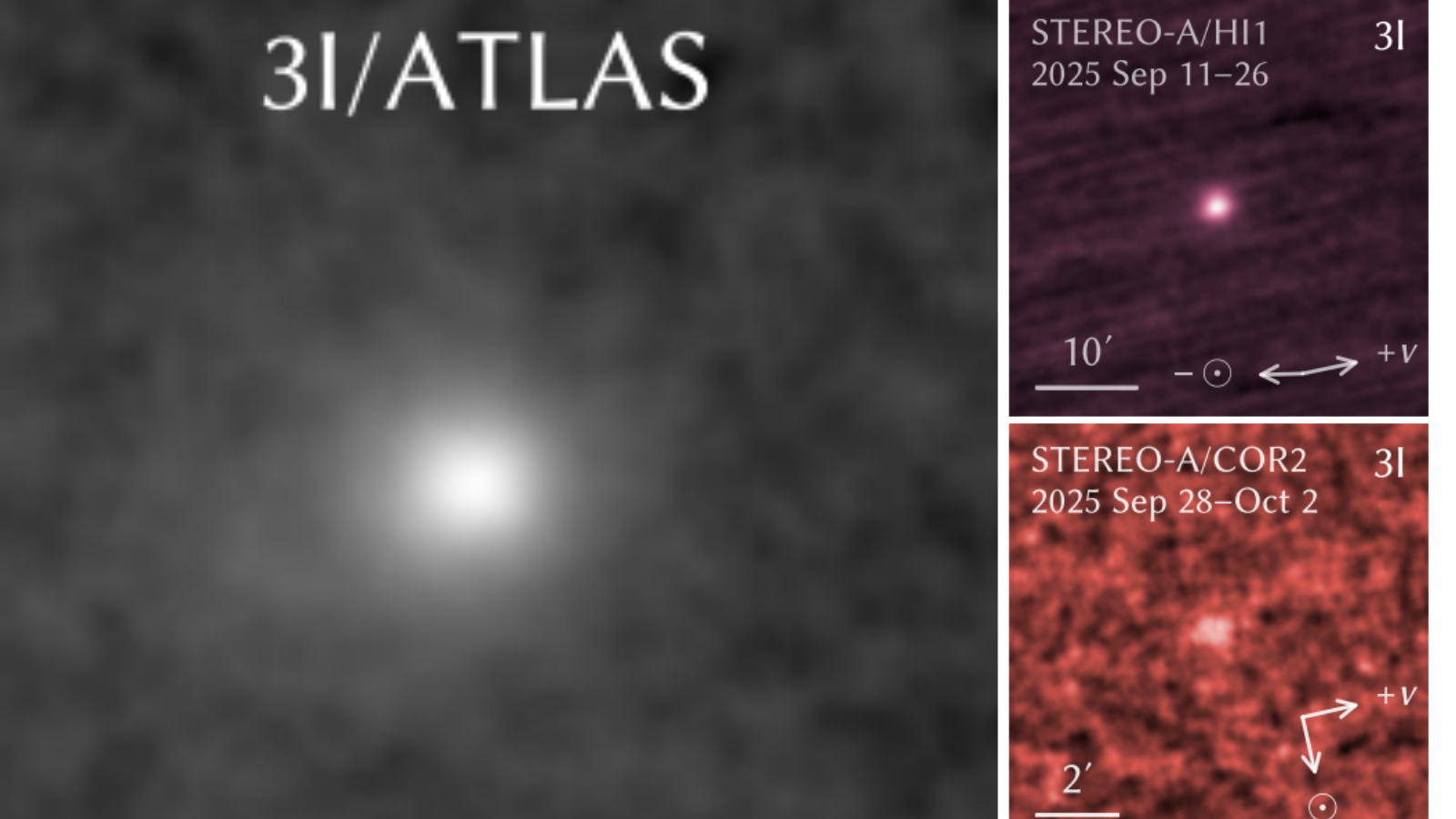Saturn Surprises Spur Cassini Mission Reprise

Saturn?srings and moons turned out wilder than any scientist could have imagined, butunknowns remain as the Cassini spacecraft concludes its primary mission and embarkson a new one.
?One of thegreatest surprises about Cassini's science results is that some of the mostextreme predictions have turned out to be correct,? said Bob Pappalardo, ageologist at NASA's Jet Propulsion Laboratory in Pasadena, Calif., who recentlysigned on as Cassini project scientist.
Findings fromthe four-year primary mission include liquid lakes on Saturn's moon Titan, icyplumes spouting from the moon Enceladus, and gigantic storms that make Saturnseem like Jupiter.
Pappalardoand other scientists look forward to Saturn serving up even more surprisesduring the extended, two-year Cassini tour that began June 30 — and perhapssome answers as well.
Mysteriesremain
The rings ofSaturn got a true close-up when Cassini arrived. The rings appear less likeorderly lanes of traffic and more like highways from hell, with moonlets the size offootball stadiums plowing through the frozen debris or pulling off streamsof the stuff with their gravitational pull.
?Seeing thegravitational effects between moons and ring particles is pretty revolutionaryin understanding how the rings work,? Pappalardo told SPACE.com.
Breaking space news, the latest updates on rocket launches, skywatching events and more!
Thediscovery of the moonlets suggested that Saturn?s rings are the remnants of amoon shattered by collision with a comet or asteroid.
Still,Saturn?s iconic rings almost took a backseat to the wacky weather thatdominates the gas planet. A hurricane-likestorm appeared at the planet?s south pole, while Cassini also confirmed abizarre hexagonshape circling the north pole that still puzzles scientists.
Electricworld
Cassini similarlywitnessed several electrical storms, including long-lived one that firstappeared in late 2007. That monsterstorm produced lightning 10,000 times more powerful than any seen on Earth,spanning thousands of miles.
Scientistsfind equal fascination in what lies beyond the ringed planet. Saturn nowharbors more than 60 larger moons, compared with just 18 known moons whenCassini launched in 1997.
Thespacecraft dropped its Huygens probe into Titan?s clouds and discoveredEarth-like weather and environmental effects there in early 2005, but combinedwith completely different chemical building blocks. Methane and ethane raindown instead of water to form lakes and rivers. A hidden ocean also apparentlylurks beneath the moon?s crust.
Incrediblemoon
Morerecently, Cassini flew in March 2008 through an icy geyser emanating from themoon Enceladus and sniffedout organic molecules such as carbon dioxide and methane. That suggests themoon may contain conditions for life, although scientists have yet to confirmliquid water.
Pappalardodescribed Enceladus as ?a tiny moon that?s incredibly active? despite its relativelysmall size, equal to that of Arizona. Saturn?s gravitational influence flexesthe moon and produces tidal heating that may allow for a liquid ocean beneaththe surface of Enceladus, although scientists still debate this.
?Seems like an ocean should freeze up pretty quickly,?Pappalardo said, adding that tidal heating and impurities within the oceanmight keep it liquid. ?It?s a great mystery, and it?s teaching us about how icysatellites work.?
The extendedCassini tour will include more visits to Titan and Enceladus, and not onlybecause Cassini uses Titan for gravitational boosts during flybys. Both moonsseem to suggest the possibility of life in the outer solar system, along withJupiter?s moon Europa.
Sunset tosee
Scientistsalso have their eyes set on the upcoming Saturn equinox in August 2009, whenthe sun ?sets? on the ring and passes through the ring plane. That event allowsfor an unprecedented view of the overall ring.
?We can lookfor subtle warping of the ring, thermal effects and shadow effects,? Pappalardosaid. ?It may not be a perfectly flat disk.?
Cassini?sextended mission also could resolve a longstanding mystery about pinning downthe exact length of Saturn?sday. The measurement of Saturn?s rotation is based on the rotation of theplanet?s magnetic field, but that magnetic rotation rate has changed betweenthe time of the Voyager encounters with Saturn in the 1980s and Cassini?sarrival in 2004.
Pappalardocompared Cassini to a ship floating in Saturn?s magnetic field ocean — ametaphor that could also apply to the ongoing Cassini mission as it continuesto plumb Saturn?s secrets.
??Slowlyover time, you cross the ocean at different times and days and seasons,?Pappalardo said. ?Eventually you start to get a picture of what goes on.?
- Video: Parachuting onto Titan
- Video: Enceladus — Cold Faithful
- Gallery: Cassini's Latest Discoveries
Join our Space Forums to keep talking space on the latest missions, night sky and more! And if you have a news tip, correction or comment, let us know at: community@space.com.
Jeremy Hsu is science writer based in New York City whose work has appeared in Scientific American, Discovery Magazine, Backchannel, Wired.com and IEEE Spectrum, among others. He joined the Space.com and Live Science teams in 2010 as a Senior Writer and is currently the Editor-in-Chief of Indicate Media. Jeremy studied history and sociology of science at the University of Pennsylvania, and earned a master's degree in journalism from the NYU Science, Health and Environmental Reporting Program. You can find Jeremy's latest project on Twitter.
